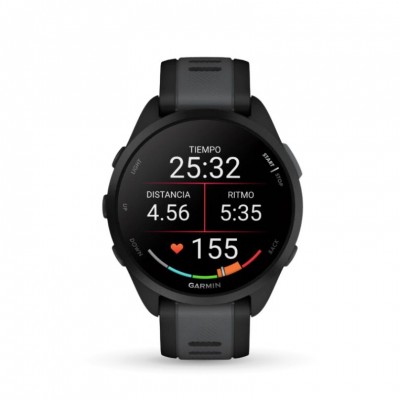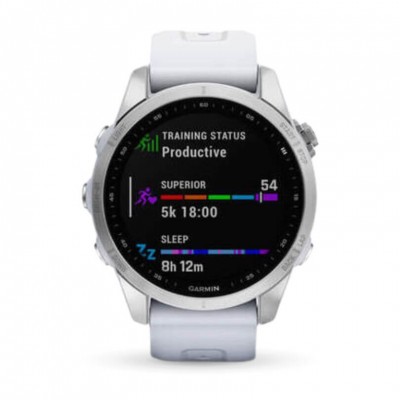You may be interested in:
As is well known, if we are aiming to improve our performance, it is important that we include different types of training sessions that stimulate our body and, consequently, provoke the necessary adaptations to improve our physical condition. Variation will push us to run at different intensities, which will be the key to try to find and show our best version.
Within the different types of training sessions or methods that we have at our disposal when it comes to lacing up our running shoes, we can differentiate between the continuous method and the split method. As the name indicates, the first would consist of running continuously and without breaks, while the second refers to the type of session where there are pauses or short breaks.

One of the most representative contents of interval training is the series, the type of session loved and hated in equal parts, even forgotten by a part of the world of popular runners. Surely, whether voluntarily or involuntarily, we have put into practice a series training session on some occasion, experiencing a feeling of great effort to carry them out. That is why sometimes we try to avoid doing them or if they are done, we do it incorrectly or with a low predisposition.
In the following lines we are going to share the main mistakes to avoid when you perform your series sessions, as well as help you so that from now on you face them in a much more profitable and positive way. Sounds good, right?
What does the series consist of?
For those who do not know, it is a type of session where there is a part that is run at medium, high, very high or maximum intensity, while there is another period where we can recover from that effort, both actively (jogging or walking) and passively (standing). After all, they are designed to sustain efforts of great physical and even mental demand, and that would be difficult to perform continuously, that is, without stopping at any time.
Due to its usefulness, it is usual that the series are performed at very demanding rhythms, although doing series does not mean that we always try to reach our limit.
Although most of the time we associate the series with maximum or submaximal speed rhythms, doing a series does not necessarily mean running at our highest capacity at the time of the session. Depending on the duration or the time of the season, these may include a greater or lesser intensity, seeking in each case to improve different physiological milestones, as well as competitive rhythms at different distances.
3 mistakes to avoid in your series sessions
It's time to get down to business. Here we are going to tell you and give you a solution to the 3 mistakes you have to avoid in your series sessions from now on.
Lack of intensity and volume planning
Performing a series session is no small feat and requires prior planning and design. Knowing in advance at what intensity we should run each of the series and scrupulously stipulate the duration or distance of the same is something indispensable and in what we fail sometimes. Whether through heart rate, pace, power or subjective perception of effort (RPE), we must have a tool to control the intensity of the series, so that we can stimulate the desired training zones for that particular session.
In addition to the importance of the intensity, we must set the duration or meters of each series, because depending on the intensity set, it will not be possible to run any distance. For example, if my goal is to stimulate my Vo2max, which corresponds to the Z5 heart rate or an RPE of 8 to 9 out of 10, it will be impossible to extend, depending on the level, for more than 6 to 8 minutes, since it is an effort very close to our maximum. On the other hand, if we wish to stimulate lower zones or thresholds, the duration or distance may be longer.
It is not enough to perform the series at random, it is advisable to have some basic notions of training and physiology or to rely on the knowledge of an expert in order to pursue a specific objective.
Absence of physical or mental predisposition
The series sessions require to face them from a position of physical and mental strength. It is not pleasant, and we say it from experience, to face a series training with a great corporal and muscular fatigue or with symptoms of illness. In these cases, we sin of being too strict and rigorous with our training plan, wanting to get out at all costs the scheduled session. Sometimes we have to do it, but if we consider that our physique is not ready to demand the maximum, we should be self-critical and postpone the session for another time.
It is better to go to the series really prepared, it is not worth to face them half-heartedly or with a multitude of physical and psychological questions.
It is not only the physical that rules, but in many occasions the mind has a much greater weight. Knowing that we are going to face a demanding effort, we must have enough self-motivation, concentration and will to face this type of training. But there are days when we are not prepared, when our head says "no". It is in these moments when we must be flexible and leave the series for another day. But be careful, this advice is not applicable to every week, because if not, we are not doing well...
Mistakes by choosing and measuring the course
Unless it is a specific training where we are interested in overcoming slopes, the route where we are going to perform the series should be as flat as possible and with the most comfortable surface possible. Although in the past the series were carried out almost exclusively on an athletics track, the appearance of the GPS system of the heart rate monitors allows training in other types of scenarios. Of course, as we have said, not just any place will do. Try to avoid routes with excessive turns or which are too exposed to gusts of wind.
Our goal will be to run as fast as possible within the intensity set for each session, so a flat course with a regular surface and no curves will be the best possible option.
Finally, as much as technology has advanced by leaps and bounds, never trust the distance that your GPS watch shows, as it can show faster or slower paces than they really are. Therefore, if you perform the series by paces, have some flexibility and rely on your internal sensations to maintain the intensity stipulated for each session.
If you are very meticulous and want to nail the paces to the millimeter, try doing the sets on a running track. Knowing that a lap around lane 1 or "rope" of the track is 400 meters, you will only have to look at the pace times to calculate and keep a certain pace, without the need to pay attention to the distance that the GPS registers.
Plan, prepare and execute correctly
Now you know, the series are not just go out to run at your highest capacity and ready, but entail a process of planning the intensity and volumes, a physical and mental predisposition and execution as thorough as possible. From now on you will have no excuse to take full advantage of the series training and keep improving to achieve each and every one of your goals, runneante!
Read more news about: Running Training












































